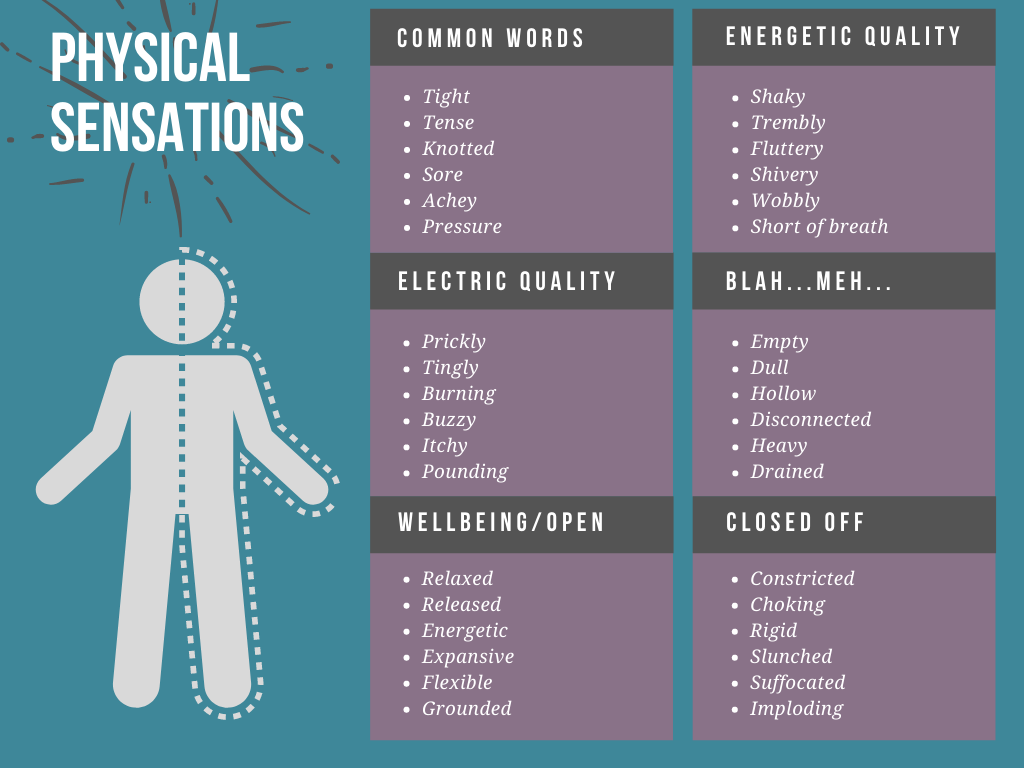
Try this:
Sit quietly somewhere, and for the next couple of minutes, do a body scan. Starting with your feet, slowly move up your body in awareness all the way to the top of your head.
As you go, you’re just noticing and describing your bodily sensations and NOTHING ELSE. Use the diagram above to help you name the sensations.
Then, try it when you’re in the shower. When you’re doing the dishes, when you’re in an elevator, when you’re having a conversation, when you’re about to go to sleep. Just see what comes up, and get really good at noticing, naming, and describing. Yes, that’s it.
Explained:
Our nervous systems are our “smoke detectors”, alerting us when danger is near, and they do this by causing physical sensations that our brains then make sense of. So, body first, then the story…
When we have experienced trauma, our smoke detectors are set off unconsciously by environmental triggers that aren’t necessarily unsafe. To begin our recovery, we need to become aware of our internal experience, in mind and body.
Interoception is the scientific term for our awareness of our internal experience, namely our sensory, body-based feelings. The greater our awareness, the better we can control our lives. If we are aware, we can take action and regulate ourselves by using techniques to tolerate, change, or otherwise choose healthy coping skills.
The more we try to push away our inner experience, the more likely our emotions are to take over and leave us overwhelmed, confused, and fearful. When we are unable to safely acknowledge what’s going on inside us, we become hyper vulnerable to any trigger or sensory change— launching us into a panic or shut down. Not only this, but it dampens our capacity to feel joyful emotions such as elation, relaxation, and connectedness.